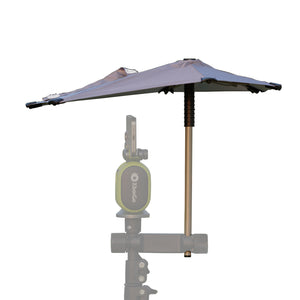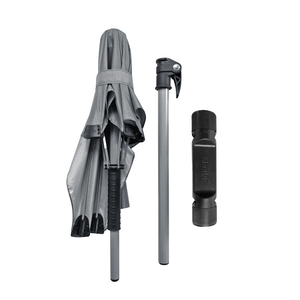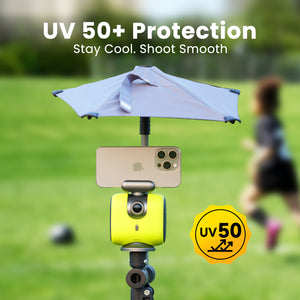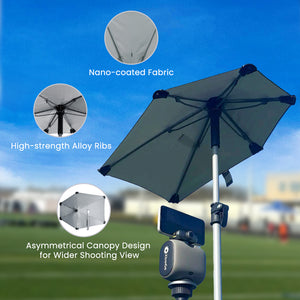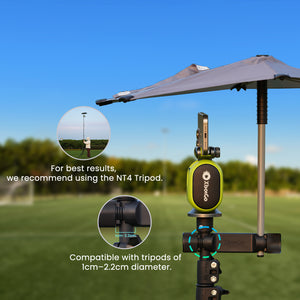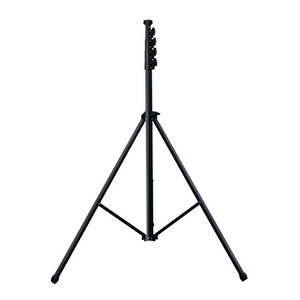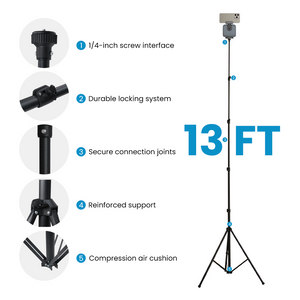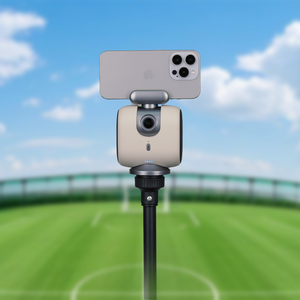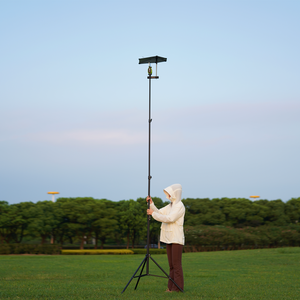XbotGo Chameleon AI Sports Camera
Hockey Skate Sharpening Guide: Find Your Perfect Edge
You're standing at the pro shop counter, skates in hand. The technician asks, "How'd you like them sharpened?" You freeze. Standard? Deep? Shallow? What do these terms even mean?
If this sounds familiar, you're not alone. Understanding skate sharpening can transform your game from frustrating to fantastic. The right sharpening affects everything—your speed, control, and confidence on the ice.
This guide breaks down everything you need to know about hockey skate sharpening. We'll cover the science, explore your options, and share real insights from players who've been where you are now.
Understanding Hockey Skate Sharpening Fundamentals
How Skate Sharpening Actually Works
Hockey skate blades aren't like kitchen knives. Look closely at your blade and you'll see two edges with a groove running down the middle. This groove, called the hollow, is what makes skating possible.
When you sharpen your skates, a spinning grinding wheel carves this hollow into your blade. The wheel's curve determines how deep that hollow becomes. This depth changes everything about how your skates perform.
Think of it like car tires. Deeper treads grip better but create more resistance. Shallow treads let you glide faster but offer less control. Your skate hollow works the same way.
The Science Behind Hollow Depths
The relationship between your blade and the ice comes down to physics. Here's what happens:
Deeper hollows create sharper edges that bite into the ice. You get:
- Better grip for tight turns
- Stronger push-offs for quick starts
- More control during stops
- Increased friction that slows you down
Shallower hollows create flatter blades that ride on top of the ice. You get:
- Faster gliding speeds
- Less leg fatigue
- Smoother transitions
- Reduced turning ability
A veteran skater with 60 years of experience puts it perfectly: "The deeper the hollow, the more the skates control the skater. The shallower the hollow, the more the skater controls the skates."
Types of Hockey Skate Sharpening
Traditional Hollow Sharpening (3/8" to 1")
Traditional hollow sharpening remains the gold standard. Most pro shops offer these common options:
Deep Hollows (3/8" - 7/16")
These aggressive cuts dig deep into the ice. They're perfect if you:
- Weigh less than 150 pounds
- Need maximum grip for quick direction changes
- Play a position requiring frequent stops
- Don't mind working harder to maintain speed
Medium Hollows (1/2" - 9/16")
The sweet spot for most players. These balanced cuts offer:
- Good grip without excessive drag
- Predictable performance in various conditions
- Easy adaptation for developing players
- Flexibility for different playing styles
Most shops default to 1/2" for good reason. It works for roughly 70% of players right out of the gate.
Shallow Hollows (5/8" - 1")
Speed demons love these cuts. They provide:
- Maximum glide efficiency
- Reduced muscle fatigue
- Better performance for heavier players
- Less grip in tight situations
A 250-pound player reported: "Switching to 3/4" changed everything. I could finally skate full games without my legs burning out."
Flat Bottom V (FBV) Sharpening
FBV represents the biggest innovation in skate sharpening in decades. Instead of a round hollow, FBV creates a flat bottom with angled edges.
Why FBV Works Differently
Traditional sharpening creates a U-shape. FBV creates more of a trapezoid. This unique geometry offers:
- Edge bite when you need it
- Glide speed when you don't
- Longer-lasting sharpness
- Customizable performance profiles
Real Player Experiences
A beer league player noted: "FBV gave me NHL-level glide with my beer league skills. I'm faster with less effort."
However, it's not all roses. Another player warned: "When you lose an edge with FBV, you lose it completely. There's no gradual warning."
Cost Considerations
FBV typically costs more than traditional sharpening. You'll pay:
- 20-30% higher prices per sharpening
- Potential travel to find FBV-equipped shops
- Initial adjustment period costs (multiple sharpenings to find your preference)
Automated vs. Manual Sharpening
The method matters as much as the hollow depth.
Manual Sharpening: The Human Touch
Traditional sharpening relies on skilled technicians who:
- Guide blades by hand across spinning stones
- Apply pressure based on experience
- Adjust for individual blade conditions
- May introduce slight variations
One frustrated player shared: "I asked for 5/8" but got something deeper. The lazy tech didn't want to redress the wheel. I could tell immediately."
Automated Sharpening: Consistent Precision
Computer-controlled systems deliver:
- Exact hollow depths every time
- Even pressure from heel to toe
- Preserved blade profiles
- Predictable results across sharpenings
Professional teams increasingly use automated systems. The consistency helps players develop muscle memory without variables.
Choosing the Right Sharpening for Your Game
Weight-Based Recommendations
Your body weight directly impacts optimal hollow selection. Here's what works:
Under 130 lbs
- Start with 1/2"
- Try 3/8" if you need more bite
- Consider 7/16" as a compromise
- Expect to need deeper hollows than heavier players
130-180 lbs
- Begin with 1/2" standard
- Experiment with 9/16" for more glide
- Stay flexible based on ice conditions
- Most options work well at this weight
180-220 lbs
- Consider 5/8" as your baseline
- Try 1/2" only if you lack control
- Focus on glide over grip
- Your weight provides natural edge pressure
Over 220 lbs
- Start with 5/8" minimum
- Many prefer 3/4" or even 7/8"
- Avoid deep hollows that cause "digging"
- Prioritize efficiency over bite
One European formula suggests: Divide your weight in kilograms by 3.14. The result gives your optimal hollow in millimeters. An 80kg player would use 25mm (about 1").
Skill Level Guidelines
Experience changes everything about sharpening preferences.
Beginners (First 2 Years)
Start simple:
- Use 1/2" hollow exclusively
- Avoid experimenting too early
- Focus on basic skating skills
- Don't blame the sharpening for technique issues
Intermediate Players (2-5 Years)
Time to explore:
- Try one step up or down from 1/2"
- Notice how changes affect your game
- Keep notes on preferences
- Consider ice conditions in decisions
Advanced Players (5+ Years)
You know what works:
- Carry multiple blade sets with different hollows
- Adjust for specific rink conditions
- Understand the physics behind your choices
- Help newer players find their preferences
Playing Style Considerations
Your role and style determine optimal sharpening.
Speed-Focused Players
- Choose 5/8" or shallower
- Accept reduced agility for straight-line speed
- Consider FBV for best of both worlds
- Minimize unnecessary resistance
Agility-Focused Players
- Prefer 3/8" to 1/2" range
- Prioritize edge control over glide
- Accept increased effort for better turns
- Sharpen more frequently due to wear
Physical/Power Players
- Balance between extremes with 1/2" to 5/8"
- Let natural strength provide edge pressure
- Focus on consistency over specialization
- Avoid overthinking hollow selection
When and How Often to Sharpen
Timing Guidelines and the 20-Hour Rule
The magic number is 20. Most players need sharpening after 20 hours on ice. But that's just a starting point.
Usage-Based Schedule
- Weekend warriors (2-3 times yearly): Annual sharpening suffices
- Casual players (1-2 times weekly): Monthly maintenance
- Regular players (3-4 times weekly): Every two weeks
- Daily skaters: Weekly or more
Elite players might sharpen before every game. Recreational players can go months between sharpenings.
Environmental Factors That Affect Frequency
Ice conditions dramatically impact blade wear.
Cold, Hard Ice
- Dulls blades faster
- Requires deeper hollows
- Needs frequent sharpening
- Common in newer facilities
Warm, Soft Ice
- Gentler on edges
- May feel "sticky" with deep hollows
- Allows extended sharpening intervals
- Typical in older or busy rinks
Outdoor Ice
- Extremely hard on blades
- Contains debris and imperfections
- Demands protective measures
- May require immediate resharpening
DIY Testing Methods
Know when to sharpen without guessing.
The Fingernail Test
The gold standard check:
- Hold blade securely
- Gently scrape fingernail across edge
- Sharp edges produce nail shavings
- Dull edges slide without scraping
Test both edges on both skates. Uneven sharpness indicates poor previous work.
Visual Inspection
Look for these signs:
- Light reflecting off edges (indicates dullness)
- Visible nicks or gouges
- Uneven wear patterns
- Rust or discoloration
Performance Indicators
Your skating tells the truth:
- Slipping during push-offs
- Difficulty stopping cleanly
- "Washing out" on turns
- General feeling of instability
Advanced Sharpening Strategies
Seasonal Adjustments
Smart players adapt to changing conditions.
Winter Strategies
- Go one step deeper (5/8" to 1/2")
- Sharpen more frequently
- Carry backup blades
- Account for colder rink temperatures
Summer Adaptations
- Choose shallower options
- Extend sharpening intervals
- Watch for over-gripping
- Adjust for softer ice conditions
Professional-Level Tips
Elite players use these advanced techniques:
Multiple Steel Sets
Pros often carry:
- Deep hollow for crucial games
- Shallow hollow for practices
- Backup set for emergencies
- Experimental set for testing
Timing Optimization
Strategic sharpening includes:
- Fresh edges 2 hours pre-game
- Never trying new hollows for important games
- Tracking performance after each sharpening
- Building relationships with trusted sharpeners
Troubleshooting Common Sharpening Issues
Too Sticky vs. Too Slippery
Finding the sweet spot takes patience.
When Skates Feel "Sticky"
Symptoms include:
- Edges grabbing unexpectedly
- Difficulty maintaining glide
- Excessive effort for basic moves
- Long "break-in" periods
Solutions:
- Request next shallower hollow
- Check for over-sharpening
- Ensure proper technique
- Consider ice conditions
When Skates Feel "Slippery"
Warning signs:
- Edges sliding during stops
- Lost grip in turns
- Reduced push-off power
- Lack of confidence
Fixes:
- Try one step deeper
- Inspect for worn edges
- Verify sharpening quality
- Account for soft ice
Quality Control and Shop Selection
Not all sharpening is created equal.
Questions for Your Sharpener
- "What hollow do you recommend for my weight?"
- "Do you use automated equipment?"
- "Can you maintain my blade profile?"
- "How do you ensure consistency?"
Red Flags to Avoid
- Dismissive attitudes about preferences
- Reluctance to discuss their process
- Inconsistent results between visits
- Excessive blade material removal
Finding Quality Service
Look for shops that:
- Invest in modern equipment
- Train their staff properly
- Welcome questions and feedback
- Stand behind their work
Maintenance Between Sharpenings
Proper care extends blade life dramatically.
Post-Skate Routine
- Wipe blades completely dry
- Install hard guards immediately
- Remove guards at home for air drying
- Apply soft guards for storage
Common Mistakes
- Leaving blades wet in guards
- Walking on concrete without protection
- Storing in damp environments
- Ignoring minor rust spots
Emergency Solutions
For mid-game issues:
- Portable sharpening stones
- Re-edging tools
- Backup blade sets
- Quick-fix techniques
Remember: These are bandaids, not solutions.
Making It All Work for You
Hockey skate sharpening isn't one-size-fits-all. Your perfect setup depends on weight, skill, style, and personal preference. The journey to finding your ideal sharpening is part of becoming a complete player.
Start with these proven strategies:
- Begin with 1/2" hollow unless you have specific needs
- Change one variable at a time
- Keep detailed notes about what works
- Build relationships with quality sharpeners
- Listen to your body and trust your feel
Most importantly, don't overthink it. The best sharpening is the one that lets you play your game with confidence. Whether you prefer deep bite for aggressive play or shallow glide for effortless speed, the right choice is what works for you.
Your skates are your connection to the ice. Treat them well, maintain them properly, and they'll reward you with improved performance. Now get out there and find your edge—literally.
XbotGo Chameleon AI Sports Camera
Capture every moment with AI-powered tracking. Perfect for coaches, parents, and athletes who want seamless footage without manual filming.







 Soccer
Soccer Basketball
Basketball Ice Hockey
Ice Hockey Rugby
Rugby










